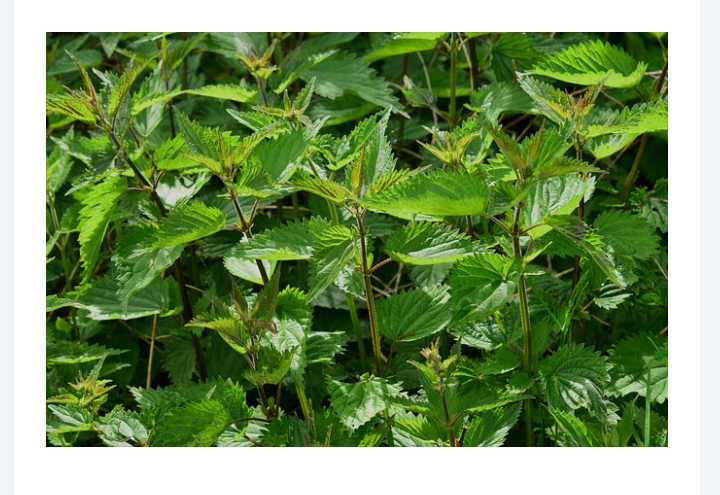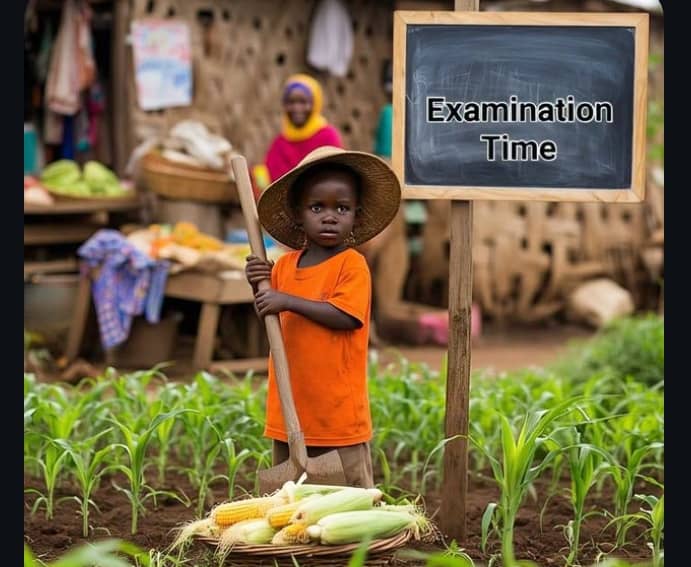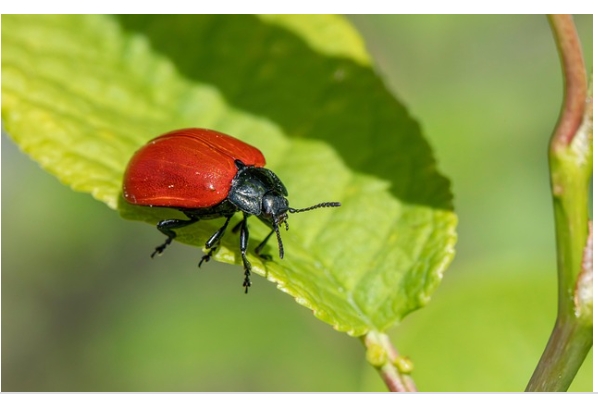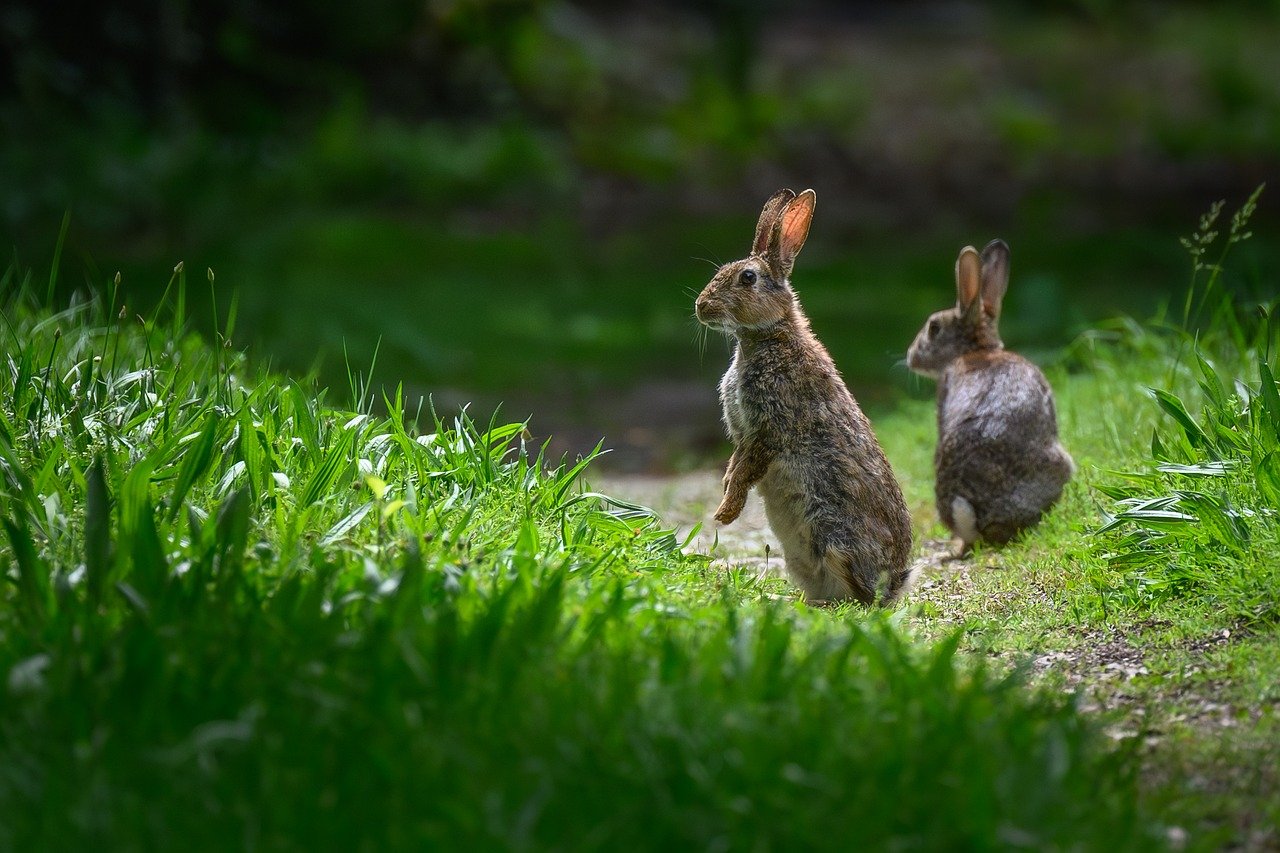Agricultural Science Primary 5 – Third Term Lesson Notes
Week 8: Common Pests and Parasites of Farm Animals
Lesson Information
-
Subject: Agricultural Science
-
Class: Primary 5
-
Term: Third Term
-
Week: 8
-
Topic: Common Pests and Parasites of Farm Animals
-
Sub-topic: Meaning, Examples, Effects, and Control of Pests and Parasites
-
Duration: 40 minutes
-
Age: 9 – 11 years
Lesson Objectives
By the end of the lesson, pupils should be able to:
-
Explain what pests and parasites are.
-
Identify and outline common pests and parasites that affect farm animals.
-
Describe the effects of pests and parasites on farm animals.
-
Suggest ways to control and prevent pests and parasites in animal farms.
Keywords
-
Pests: Small animals or insects that cause harm to farm animals.
-
Parasites: Organisms that live on or inside farm animals and harm them.
-
Ticks: Small blood-sucking insects that attach to animals’ skin.
-
Mites: Tiny insects that cause itching and irritation.
-
Lice: Small bugs that live in animal fur and suck blood.
Set Induction
Teacher: “Class, have you ever seen an animal scratching itself like it’s dancing to music?”
Tolu: “Yes, my uncle’s goat shakes its body and rubs against the wall all the time!”
Teacher: “Exactly! That goat might have pests like ticks or lice. Imagine if you had tiny insects crawling all over your body. How would you feel?”
Ada: “Yuck! I will scream and run away!”
Teacher: “Haha! Well, animals can’t run away from pests, but we can help them. Today, we will learn about pests and parasites that disturb our farm animals and how to get rid of them.”
Entry Behavior
Pupils have seen insects like flies, mosquitoes, and ants before. They may have also noticed farm animals scratching or shaking their bodies because of pests.
Learning Resources & Materials
-
Pictures of common pests and parasites (ticks, lice, mites, fleas, worms, etc.).
-
Real-life farm tools used for pest control (e.g., sprayers, powders, and medicated soap).
-
Videos or charts showing infected animals.
Building Background/Connection to Prior Knowledge
-
Pupils already know that animals can get sick just like humans.
-
They have seen animals scratching, shaking their bodies, or losing hair, which are signs of pests.
-
Some pupils may have had lice or mosquito bites and can relate to how animals feel when attacked by pests.
Embedded Core Skills
-
Observation Skills: Identifying pests and parasites in farm animals.
-
Problem-Solving Skills: Thinking of ways to prevent and control pests.
-
Communication Skills: Discussing experiences with pests.
As a farm owner, I’ve had my fair share of battles with pests and parasites. I remember the first time I found ticks on one of my goats. It was during a particularly hot season, and I could tell something was off when she started scratching more than usual. By the time I caught it, the ticks had already caused some serious irritation. That day, I learned firsthand how crucial it is to stay vigilant about external and internal pests. Over the years, I’ve picked up a few strategies to manage these threats, and in this post, I’ll share some of the common pests and parasites that can affect your farm animals, along with lessons I’ve learned from dealing with them.
1. External Pests
a. Lice
I’ll never forget the day I noticed lice on my chickens for the first time. At first, I thought it was just a few stray feathers, but after a closer look, I saw tiny white dots crawling through their plumage. Lice are a common issue in poultry, but I didn’t realize just how quickly they could spread. I had to act fast before the whole flock got affected.
Signs of Lice Infestation:
Constant pecking at their feathers.
Noticeable dry patches or bare spots on their skin.
Reduced egg production.
Management Tips:
I started dusting the chickens with poultry dust, focusing on the areas where I saw the most activity. Regular cleaning of their coops also helped. I learned that maintaining a clean environment was as important as treating the animals directly.
b. Mites
When I first encountered mites in my rabbits, it was much more subtle. One of my rabbits, who was usually calm and sweet, started scratching at its ears incessantly. At first, I thought it was just a bad habit. But after a few days, I saw scabs forming, and that’s when I knew I had to step in.
Signs of Mite Infestation:
Constant scratching or irritation around the ears or neck.
Hair loss or rough patches on the skin.
Red, inflamed skin.
Management Tips:
After getting a vet’s advice, I used a prescribed mite treatment. I also set up a dedicated space to quarantine any animals that showed signs of mites so they wouldn’t infect the others. Regular cleaning and disinfecting their living area were essential.
c. Flies
I used to dread fly season on the farm. Not only do flies make animals uncomfortable, but they also carry diseases. When I first saw a large swarm of stable flies around my cattle, I was worried they might cause more harm than just the nuisance they were. But I quickly realized that flies can transmit diseases like mastitis, especially in dairy cattle, which was a wake-up call for me.
Signs of Fly Infestation:
Constant swatting of tails or stamping feet.
Visible wounds or irritations caused by bites.
Unexplained lethargy or lack of appetite.
Management Tips:
I started using fly traps around the barn and also invested in fly-repellent sprays. But the most important thing was ensuring the cattle’s environment was clean—removing manure and food waste regularly helped a lot.
d. Ticks
Ticks are no joke. I learned this lesson the hard way when I noticed that one of my sheep was acting sluggish, and upon checking, I found several ticks attached to its body. Ticks can spread serious diseases like babesiosis, and they can weaken an animal before you even realize what’s happening.
Signs of Tick Infestation:
Lethargy or weakness.
Visible ticks attached to the skin, especially around the ears, neck, and underarms.
Pale gums or difficulty moving.
Management Tips:
After that experience, I started a weekly tick check on all my livestock, especially after they had been grazing. I also incorporated a tick-repellent dip during regular health checks and used collars for my goats to keep them tick-free.
2. Internal Parasites
a. Roundworms
One of the most challenging experiences I had was with my pigs, who got infected with roundworms. It wasn’t immediately obvious, but I started noticing that they were eating less and growing slowly. When I found roundworms in their stool, I realized the infestation had been going on for quite some time.
Signs of Roundworm Infestation:
Poor growth or weight loss.
Diarrhea or bloating.
Dull, rough coat.
Management Tips:
Deworming is essential, and I began giving my pigs an oral dewormer every three months. I also learned that rotating grazing areas helped reduce parasite buildup in the soil.
b. Tapeworms
I once had a batch of chickens that started laying fewer eggs. Upon investigation, I found that the hens were infected with tapeworms, which I hadn’t even considered as a possibility. It turned out that some of the feed I bought had been contaminated, which led to the infestation.
Signs of Tapeworm Infestation:
Weight loss despite eating.
Visible tapeworm segments in the droppings.
Decreased egg production.
Management Tips:
After treating them with the right deworming medication, I switched to a better supplier for their feed and made sure to store it properly to avoid contamination. Keeping the feeding area clean and free of pests helped prevent future issues.
c. Liver Flukes
Liver flukes were a problem I faced with my cattle during the rainy season when they had access to stagnant water. I didn’t realize how easily they could get infected until one of my cows became lethargic, and I saw signs of jaundice.
Signs of Liver Fluke Infestation:
Swelling or bloating in the abdomen.
Yellowing of the skin and eyes (jaundice).
Reduced milk production or lack of appetite.
Management Tips:
I used a fluke-specific dewormer, and after consulting a vet, I ensured that my cattle were drinking clean water from uncontaminated sources. I also drained any standing water that could have hosted fluke larvae.
3. Preventative Measures & Tips
a. Quarantine New Animals
When I brought new animals onto the farm, I always quarantined them for at least two weeks. This became especially important after one of my new goats brought in lice that quickly spread throughout my herd. By keeping them separated initially, I was able to prevent a full-blown outbreak.
b. Regular Inspections
Now, I make it a point to check all my animals weekly, especially after grazing or a new delivery of feed. I keep an eye out for signs of infestations, such as itching or visible parasites. It only takes a few minutes, but those checks are key in preventing major issues.
c. Sanitation & Cleanliness
The importance of keeping things clean cannot be overstated. I learned this the hard way when I noticed fly larvae in my pig pens last summer. Now, I regularly clean their pens and change bedding materials. It’s one of the most straightforward ways to prevent a lot of pest problems.
Lesson Content
1. Meaning of Pests and Parasites
-
Pests are small animals or insects that disturb farm animals by biting them or sucking their blood. Examples include flies, ticks, lice, and mites.
-
Parasites are organisms that live on or inside farm animals, feeding on their blood and making them sick. Examples include roundworms, tapeworms, and fleas.
2. Common Pests and Parasites of Farm Animals
| Pest/Parasite | Where It Affects the Animal | Effect on the Animal |
|---|---|---|
| Ticks | Skin, ears | Sucks blood, causes weakness |
| Lice | Hair, fur | Causes itching and hair loss |
| Mites | Skin | Causes rashes and sores |
| Fleas | Skin, fur | Causes itching and irritation |
| Roundworms | Stomach | Causes weight loss and sickness |
| Tapeworms | Intestines | Steals food from the animal’s body |
3. Effects of Pests and Parasites on Farm Animals
-
Animals lose weight because pests suck their blood.
-
They feel weak and sick due to infections.
-
Their skin becomes rough and may have sores.
-
Farmers lose money because sick animals don’t grow well or produce enough meat, milk, or eggs.
4. Control and Prevention of Pests and Parasites
-
Regularly clean animal houses and spray insecticides.
-
Give animals medicine (deworming) regularly to kill parasites inside them.
-
Use medicated soaps and dips to kill ticks and lice.
-
Do not overcrowd animals in small spaces to reduce the spread of parasites.
Class Activity (FAQs & Fun Responses)
1. What are pests?
Teacher: “What are pests?”
Daniel: “They are naughty animals that disturb other animals!”
Teacher: “Haha! Not quite. Pests are insects or small animals that harm farm animals by biting or sucking their blood.”
2. What is the difference between a pest and a parasite?
Aisha: “A pest just disturbs, but a parasite lives inside and eats food!”
Teacher: “Good! Parasites live inside or on an animal and feed on it, while pests disturb from outside.”
3. How can we prevent pests and parasites from attacking our animals?
Joshua: “We should chase them away with a broom!”
Teacher: “Nice idea, but pests are too small and fast. Instead, we use medicine, cleaning, and sprays to control them.”
Fill-in-the-Blanks for Assessment
-
_______ are small animals or insects that disturb farm animals. (Pests)
-
_______ are organisms that live inside or on farm animals and harm them. (Parasites)
-
An example of a parasite that lives in the intestines is _______. (Tapeworm)
-
Farmers can control pests by using _______ and _______. (Insecticides, deworming medicine)
-
One way to prevent parasites is to keep animal houses _______. (Clean)
Conclusion
-
Today, we learned about pests and parasites that affect farm animals.
-
We saw how they make animals sick and ways to control them.
-
Question: Who will tell their parents what they learned today and check if their chickens or goats have pests?
Chorus: “Me!!!”
Part A: Objective Questions (Fill-in-the-Gap with Options)
Instruction: Choose the correct answer from the options provided.
-
_______ are small organisms that feed on farm animals and cause harm.
a) Crops
b) Pests
c) Fertilizers
d) Equipment -
A parasite that sucks the blood of farm animals is called _______.
a) Earthworm
b) Tapeworm
c) Tick
d) Ant -
_______ is an external parasite that causes itching and skin irritation in animals.
a) Roundworm
b) Mite
c) Snail
d) Grasshopper -
Which of these pests can jump from one animal to another?
a) Flea
b) Earthworm
c) Caterpillar
d) Termite -
Tapeworms live in the _______ of farm animals.
a) Hooves
b) Stomach
c) Ears
d) Horns -
_______ is a pest that lays eggs on animal fur and skin, leading to sores.
a) Housefly
b) Mosquito
c) Lice
d) Grasshopper -
Farmers use _______ to prevent parasites from harming farm animals.
a) Insecticides
b) Sugar
c) Sand
d) Salt -
What is the best way to prevent pests in an animal house?
a) Feeding animals raw meat
b) Allowing animals to roam freely
c) Keeping animal houses clean
d) Leaving food waste around -
Deworming is done to remove _______ from the stomach of farm animals.
a) Ticks
b) Worms
c) Lice
d) Flies -
Which of these is NOT a parasite?
a) Lice
b) Roundworm
c) Butterfly
d) Mite -
What do mites do to farm animals?
a) Help them grow
b) Make their skin itchy
c) Improve their digestion
d) Clean their fur -
How can farmers control pests and parasites on farm animals?
a) Feeding animals dirty food
b) Cleaning and disinfecting shelters
c) Allowing animals to sleep in dirty places
d) Ignoring pests -
A farmer should check farm animals for pests and parasites _______.
a) Once a year
b) Only when the animal is sick
c) Regularly
d) Never -
Which of these is an internal parasite?
a) Flea
b) Tapeworm
c) Lice
d) Mite -
Animals affected by pests and parasites may _______.
a) Grow stronger
b) Become weak and sick
c) Produce more milk
d) Have more energy
Part B: Theory Questions (Evaluation Questions)
Instruction: Answer the following questions in complete sentences.
-
Define pests and parasites and explain how they affect farm animals.
-
List and explain three common external parasites of farm animals.
-
What are internal parasites? Give two examples.
-
Describe three ways farmers can control pests and parasites in animal houses.
-
Explain the effects of parasites on farm animals’ health and growth.
-
Why is deworming important for farm animals?
-
How can a farmer identify that an animal has been infected by parasites?
-
What are two major differences between external and internal parasites?
-
List four symptoms of pest infestation in farm animals.
-
Suggest three ways farmers can improve animal health and reduce the spread of pests.
Answers to Part B: Theory Questions (Evaluation Questions)
As an expert in Agricultural Science, I will provide clear, well-explained answers with real-life examples to help pupils understand better.
1. Define pests and parasites and explain how they affect farm animals.
-
Pests are unwanted insects or animals that cause harm to farm animals by feeding on their blood, skin, or food. Examples include ticks, lice, and mites.
-
Parasites are organisms that live on or inside farm animals, depending on them for survival while causing them harm. Examples include tapeworms and roundworms.
-
Effects on farm animals: Pests and parasites can cause diseases, reduce animal growth, and lower production of meat, milk, and eggs.
2. List and explain three common external parasites of farm animals.
-
Ticks: These parasites attach themselves to the skin of animals and suck their blood. They can cause diseases like tick fever.
-
Lice: Lice are tiny insects that live in the hair or feathers of farm animals. They cause severe itching and discomfort.
-
Mites: These are microscopic parasites that burrow into the skin of animals, leading to scabs, wounds, and irritation.
3. What are internal parasites? Give two examples.
-
Internal parasites live inside the body of farm animals, usually in the stomach, intestines, or blood. They absorb nutrients from the animal, making them weak and sick.
-
Examples:
-
Tapeworms: These live in the intestines and absorb food meant for the animal.
-
Roundworms: These worms live in the stomach and intestines, causing weight loss and poor growth.
-
4. Describe three ways farmers can control pests and parasites in animal houses.
-
Regular cleaning: Animal houses should be swept and washed regularly to remove dirt, food remains, and pest eggs.
-
Use of pesticides and disinfectants: Spraying animal houses with safe chemicals helps to kill pests like mites and lice.
-
Proper drainage and waste disposal: Stagnant water and animal waste should be removed to prevent the breeding of pests like mosquitoes and flies.
5. Explain the effects of parasites on farm animals’ health and growth.
-
Weakness and weight loss: Parasites suck blood and nutrients, making animals weak and thin.
-
Reduced productivity: Infected animals produce less milk, eggs, or meat.
-
Diseases: Some parasites, like ticks, spread deadly diseases.
-
Death: If not treated, severe parasite infestations can lead to the death of animals.
6. Why is deworming important for farm animals?
-
Deworming is the process of giving medicine to remove worms from the stomach of animals.
-
It helps animals digest food properly and grow well.
-
Deworming prevents diseases caused by parasites like roundworms.
-
It ensures that farm animals remain strong and healthy for better productivity.
7. How can a farmer identify that an animal has been infected by parasites?
A farmer should look out for these signs:
-
Loss of weight despite eating well.
-
Scratching, biting, or rubbing against objects (for external parasites).
-
Reduced milk or egg production.
-
Weakness, tiredness, and reduced movement.
-
Presence of worms in the feces (for internal parasites).
8. What are two major differences between external and internal parasites?
| External Parasites | Internal Parasites |
|---|---|
| Live on the outside of the animal’s body (skin, hair, or feathers). | Live inside the animal’s body (stomach, intestines, or blood). |
| Examples: Ticks, lice, mites. | Examples: Tapeworms, roundworms. |
9. List four symptoms of pest infestation in farm animals.
-
Constant scratching and restlessness.
-
Sores, wounds, or scabs on the skin.
-
Loss of fur or feathers in patches.
-
Swollen belly due to worms.
10. Suggest three ways farmers can improve animal health and reduce the spread of pests.
-
Providing clean food and water: Ensures animals do not eat contaminated food that may contain parasite eggs.
-
Regular health checks: Farmers should check their animals often and call a vet when necessary.
-
Vaccination and deworming: Helps to prevent infections and keep animals healthy.













